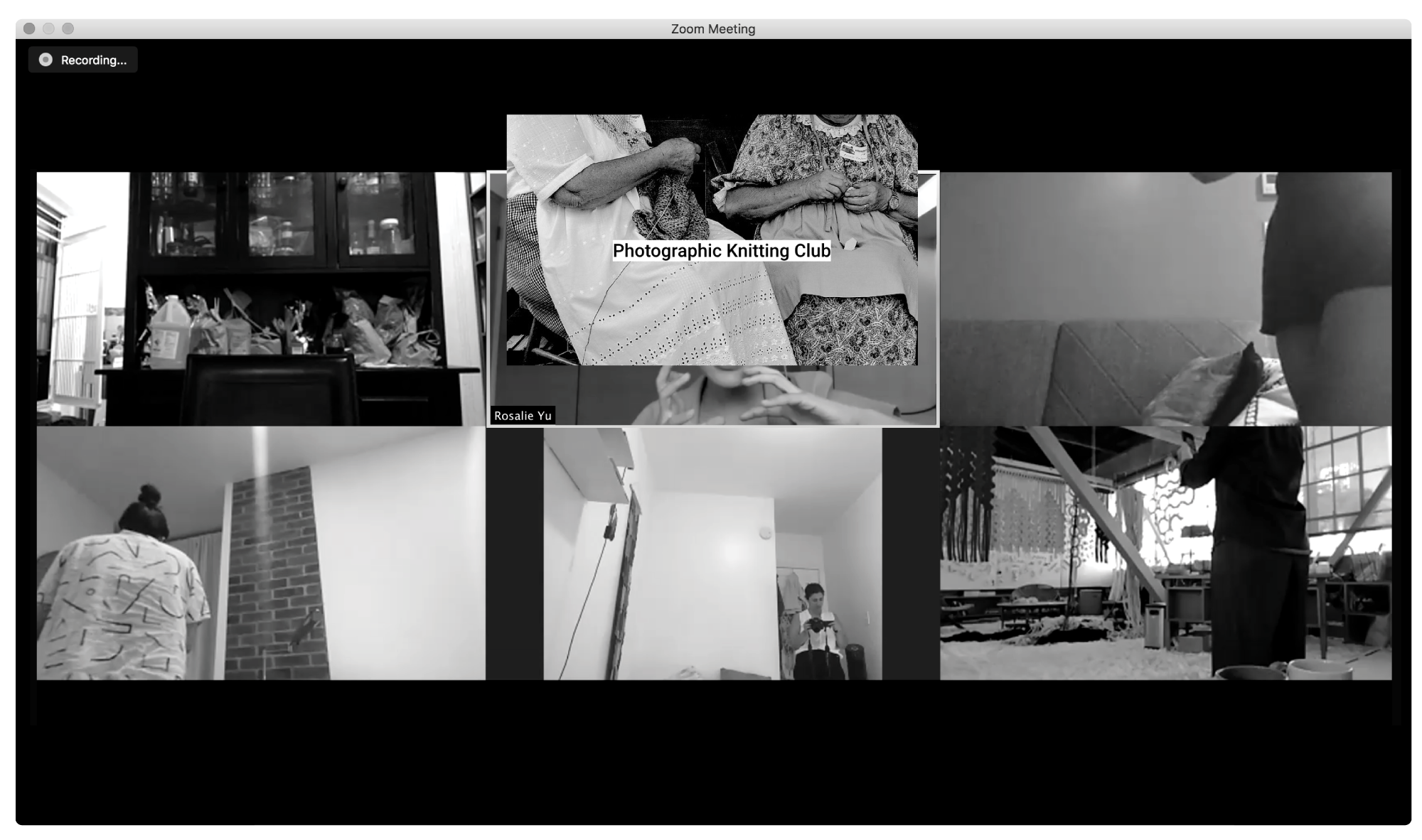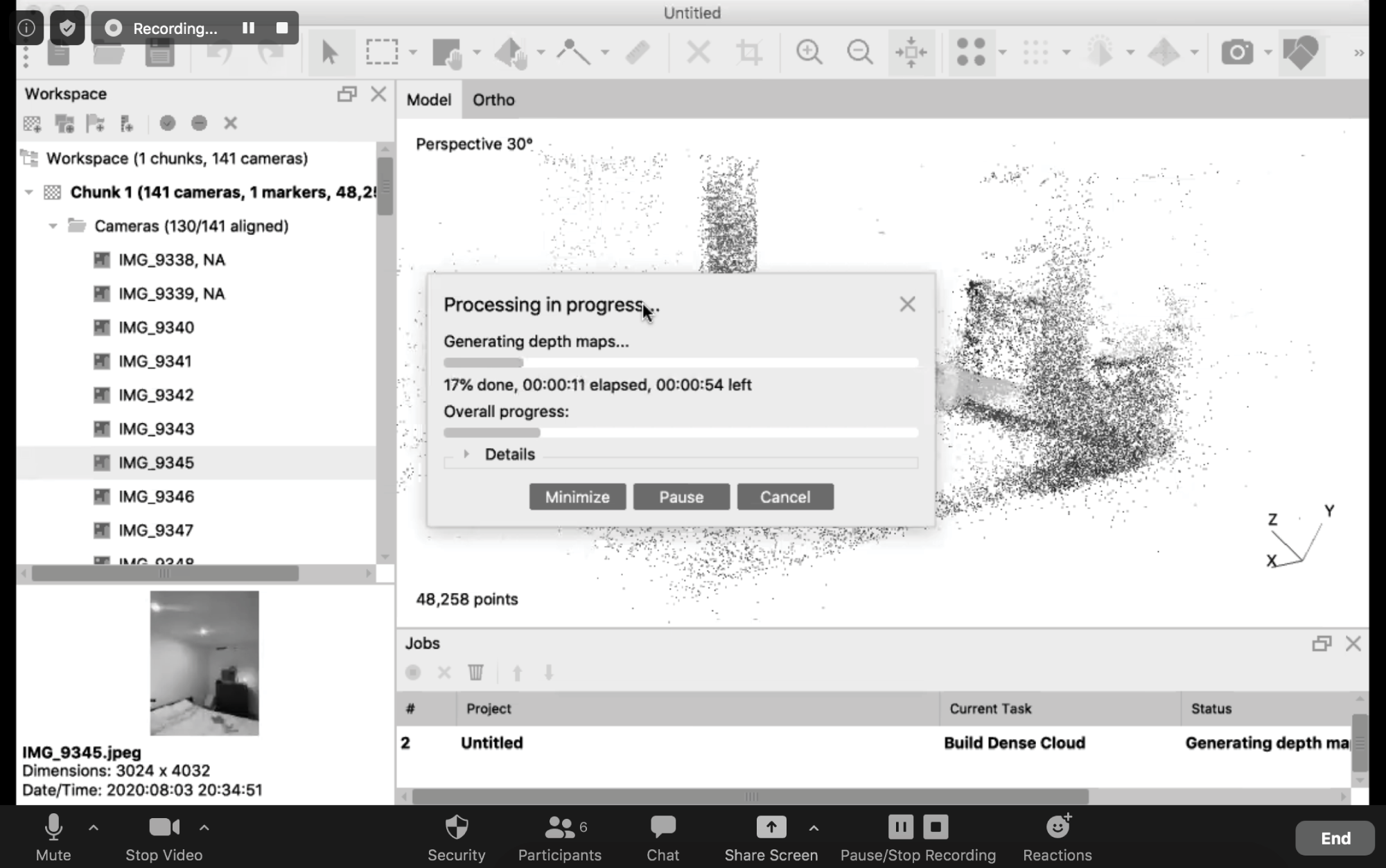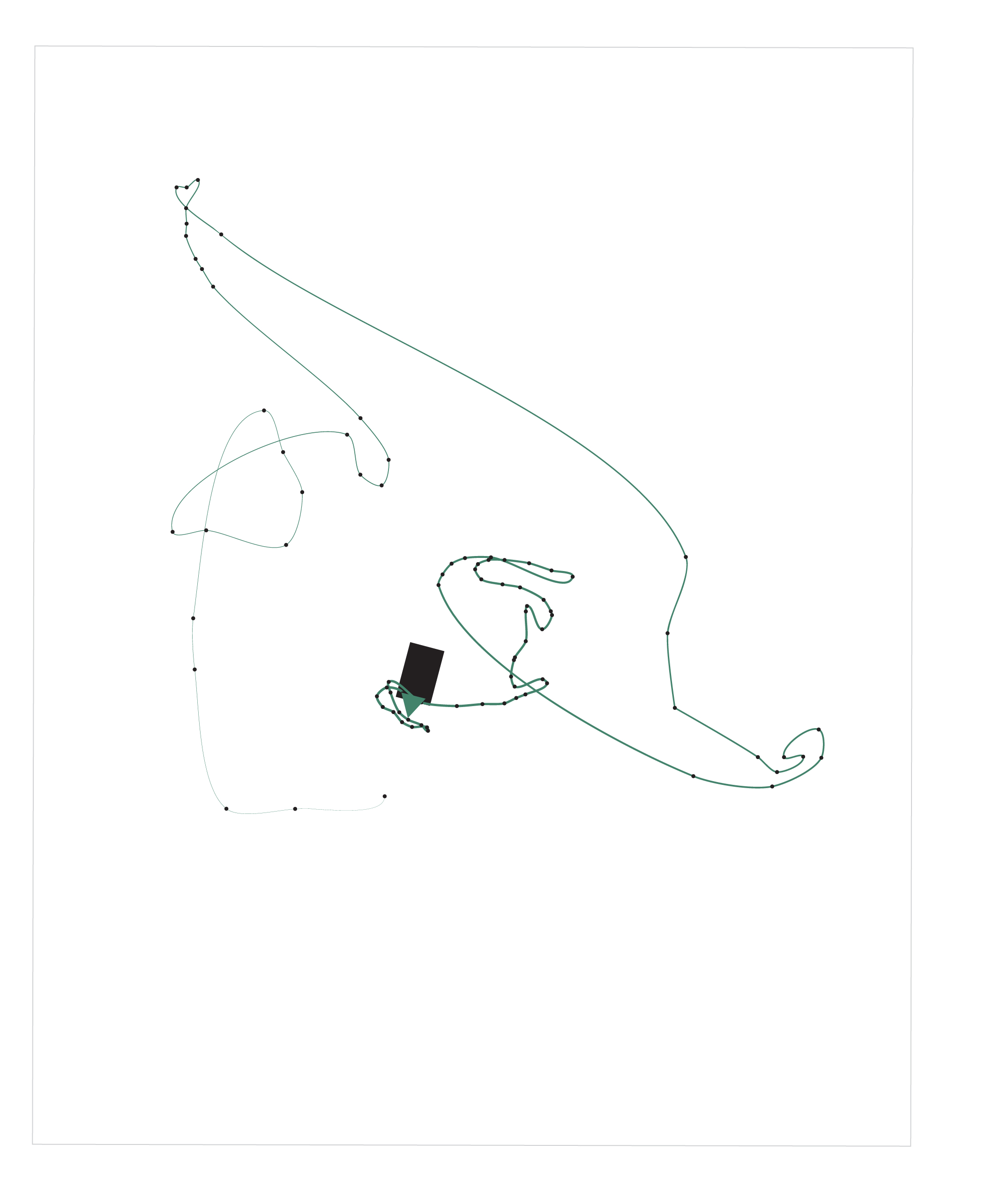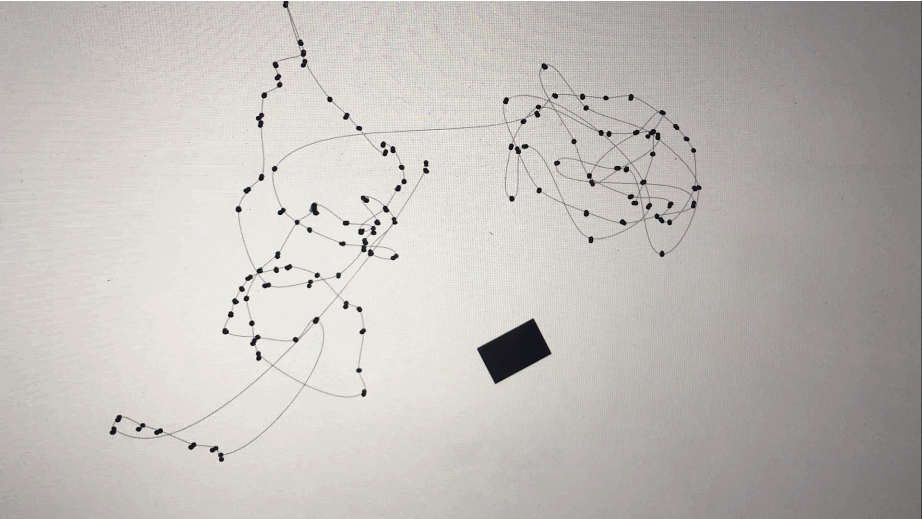#1 Photographic Knitting Club
(08.02)
After a disaster, people often return to the site of destruction to mourn and rebuild--where do you go if you spent much of the time of the pandemic isolated and alone online? How have familiar places become strange or dangerous, even if you were not able to isolate?
This first club meeting was conducted virtually, joined by artists from NY and SF where social distancing is enforced. The artists included Francesca Rodriguez Sawaya, Renata Gaui (both Tangible Code instructors), Pamela Liou (an open source loom creator), Rena Anakwe (an artist who works with sound, visuals, and scent), and Windy Chien (an artist who works with knots).
During the workshop, we discussed the gesture of knitting and reflected on how our relationship to our spaces continues to change during the pandemic. We played with different ways of looking at these familiar spaces in new ways and used our cameras to pay close attention to these findings.
This first club meeting was conducted virtually, joined by artists from NY and SF where social distancing is enforced. The artists included Francesca Rodriguez Sawaya, Renata Gaui (both Tangible Code instructors), Pamela Liou (an open source loom creator), Rena Anakwe (an artist who works with sound, visuals, and scent), and Windy Chien (an artist who works with knots).
During the workshop, we discussed the gesture of knitting and reflected on how our relationship to our spaces continues to change during the pandemic. We played with different ways of looking at these familiar spaces in new ways and used our cameras to pay close attention to these findings.
The places where people decide to take more photographs brings out more details in the final scan, creating a visual emphasis that corresponds to each artist’s unique set of concerns and emotions at that time. Each artist’s unique set of concerns, physical constraints, time of day, and habits produces images of wildly varying focus and emotional valence. For example, Pamela Liou observed that she “spen(t) a lot of time over here at this nightmare corner where things tend to accumulate for weeks... I have these, like, psychological vacuum spaces, and I just psychologically block them off."
These hundreds of photographs were later reconstructed into three-dimensional digital scans. After comparing similar points in photographs, the software is able to calculate the original capture position, angles, and sequence of shots in space. Through this, we can visualize the space, map how we move in relation to our space, and perhaps surface local knowledge (e.g. how we know our way to the bathroom with no lights on during the night) that belongs only to the person inhabiting the space.
These hundreds of photographs were later reconstructed into three-dimensional digital scans. After comparing similar points in photographs, the software is able to calculate the original capture position, angles, and sequence of shots in space. Through this, we can visualize the space, map how we move in relation to our space, and perhaps surface local knowledge (e.g. how we know our way to the bathroom with no lights on during the night) that belongs only to the person inhabiting the space.













